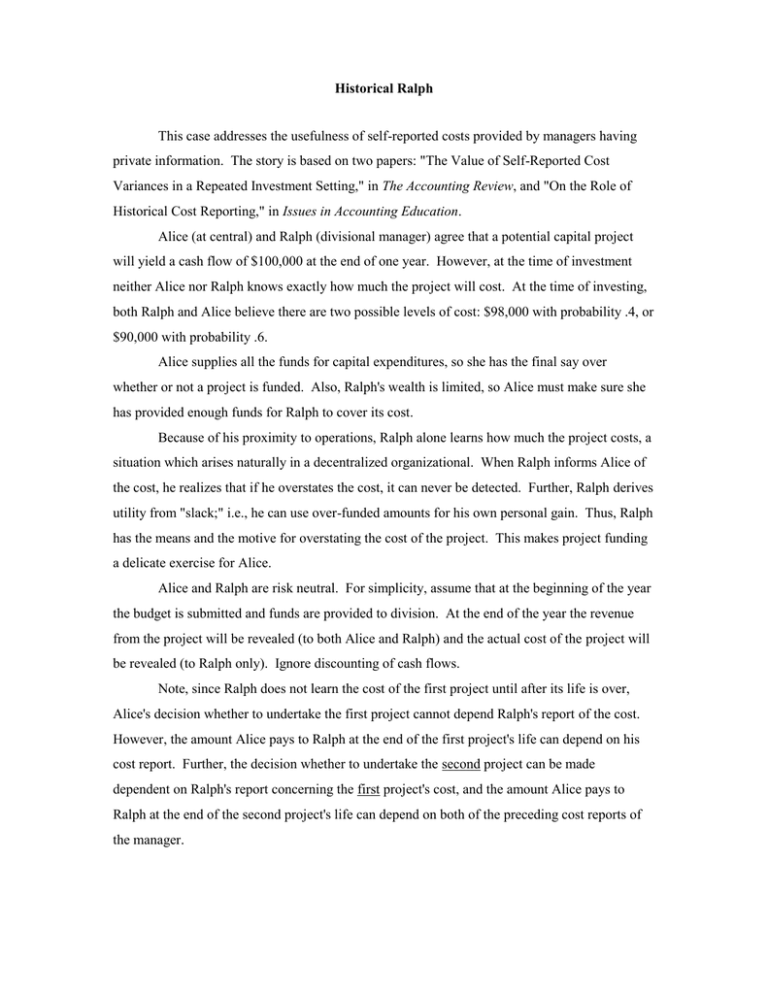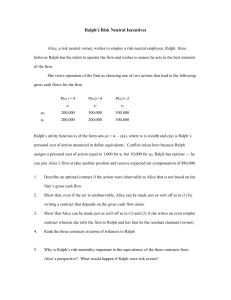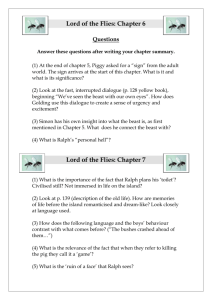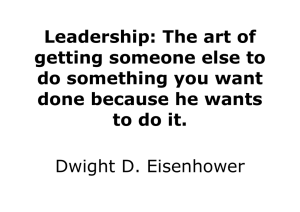Historical Ralph
advertisement

Historical Ralph This case addresses the usefulness of self-reported costs provided by managers having private information. The story is based on two papers: "The Value of Self-Reported Cost Variances in a Repeated Investment Setting," in The Accounting Review, and "On the Role of Historical Cost Reporting," in Issues in Accounting Education. Alice (at central) and Ralph (divisional manager) agree that a potential capital project will yield a cash flow of $100,000 at the end of one year. However, at the time of investment neither Alice nor Ralph knows exactly how much the project will cost. At the time of investing, both Ralph and Alice believe there are two possible levels of cost: $98,000 with probability .4, or $90,000 with probability .6. Alice supplies all the funds for capital expenditures, so she has the final say over whether or not a project is funded. Also, Ralph's wealth is limited, so Alice must make sure she has provided enough funds for Ralph to cover its cost. Because of his proximity to operations, Ralph alone learns how much the project costs, a situation which arises naturally in a decentralized organizational. When Ralph informs Alice of the cost, he realizes that if he overstates the cost, it can never be detected. Further, Ralph derives utility from "slack;" i.e., he can use over-funded amounts for his own personal gain. Thus, Ralph has the means and the motive for overstating the cost of the project. This makes project funding a delicate exercise for Alice. Alice and Ralph are risk neutral. For simplicity, assume that at the beginning of the year the budget is submitted and funds are provided to division. At the end of the year the revenue from the project will be revealed (to both Alice and Ralph) and the actual cost of the project will be revealed (to Ralph only). Ignore discounting of cash flows. Note, since Ralph does not learn the cost of the first project until after its life is over, Alice's decision whether to undertake the first project cannot depend Ralph's report of the cost. However, the amount Alice pays to Ralph at the end of the first project's life can depend on his cost report. Further, the decision whether to undertake the second project can be made dependent on Ralph's report concerning the first project's cost, and the amount Alice pays to Ralph at the end of the second project's life can depend on both of the preceding cost reports of the manager. 2 Summarizing, the sequence of events is: 1. Alice decides whether to hire Ralph and invest, or not hire Ralph. 2. Alice offers a contract to Ralph. 3. If Ralph accepts the contract, after period one Ralph learns the cost of the first project. 4. Alice observes and consumes the revenue from the first project. Ralph reports the cost of the first project, Alice pays him based on this report, and Ralph consumes any existing slack. 5. Alice decides whether to fund the second project, based on Ralph's report concerning the cost of the first project. 6. After period two, Ralph learns the cost of the second project. 7. Alice observes and consumes the revenue from the second project. Ralph reports the cost of the second project, Alice pays him based on this report, and Ralph consumes any existing slack. Part One 1. Assume for the moment that Ralph has unlimited personal wealth that he can use to cover the project's cost. What is the optimal one-period contract (for Alice)? 2. Now assume that Ralph has no wealth of his own. What is the optimal one-period contract (for Alice)? 3. Assume that a second project, with the same cost probability distribution as the first, is to come up in one year. Ralph does not learn anything about the second project's cost until the end of period two. Consider the following two-period contract: (1) Alice commits not to produce in the second period if Ralph says the first period cost is high, (2) Alice commits to produce in period two if Ralph says the first period cost is low, and pay Ralph $98,000. Suppose further that Alice produces in the first period and pays Ralph $98,000 if he reports high. How much must Alice pay Ralph for a low report to get him to report the first period cost truthfully? Calculate Alice’s expected profit under this arrangement. Calculate Ralph’s expected slack. 4. Is reporting the historical cost of the period one project useful to Alice? Why? 5. How much is the reporting mechanism and two-year incentive contract worth to Alice, assuming that the alternative is to write two separate one-year contracts with division? 6. Assuming a two-period horizon, how much is Alice willing to pay (in today's dollars) for perfectly informative project auditing? Part Two 1. Answer questions 1 – 6, assuming the revenue from investing is $95,000, the high cost is $100,000 and the low cost is $70,000. The probabilities remain as before.








